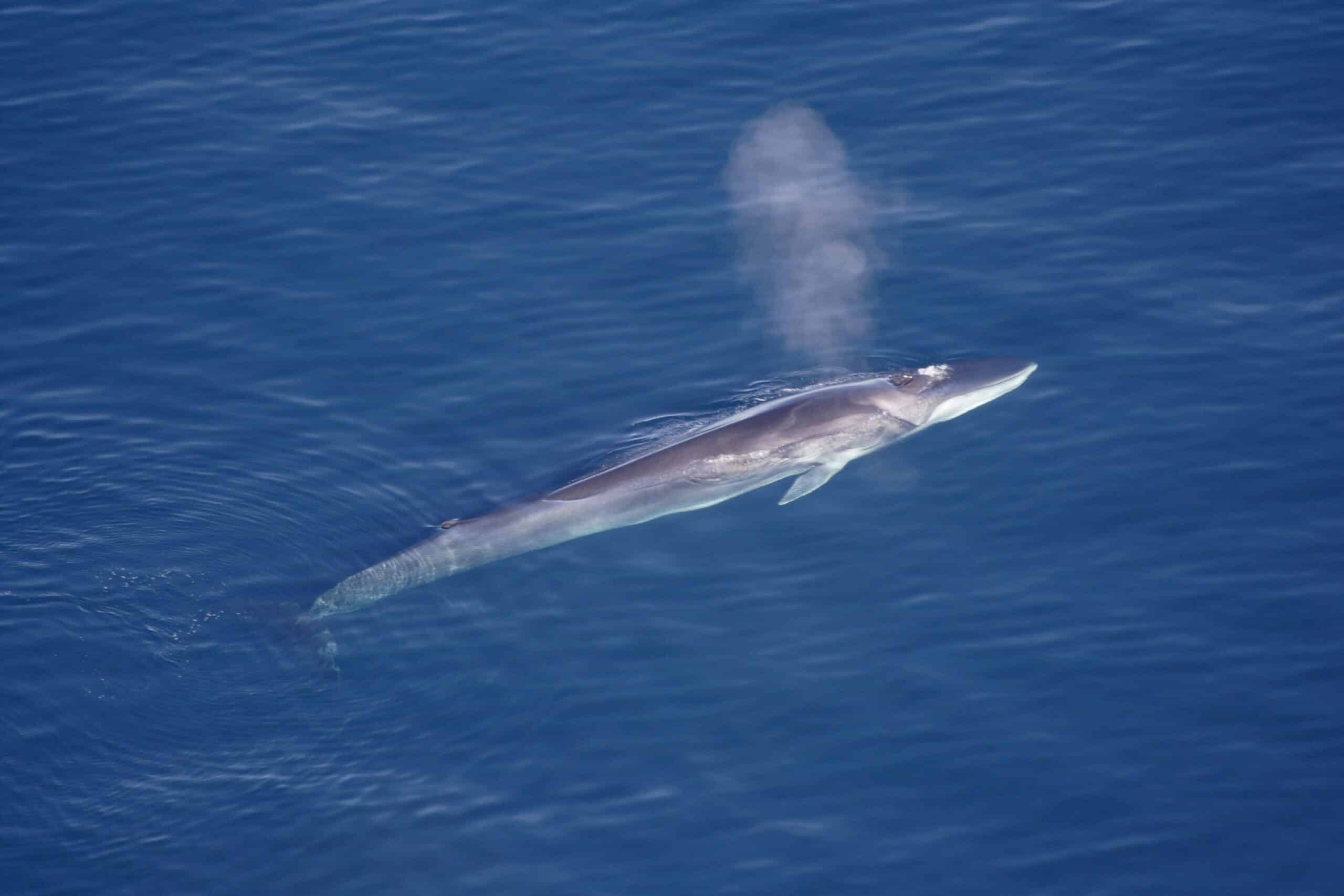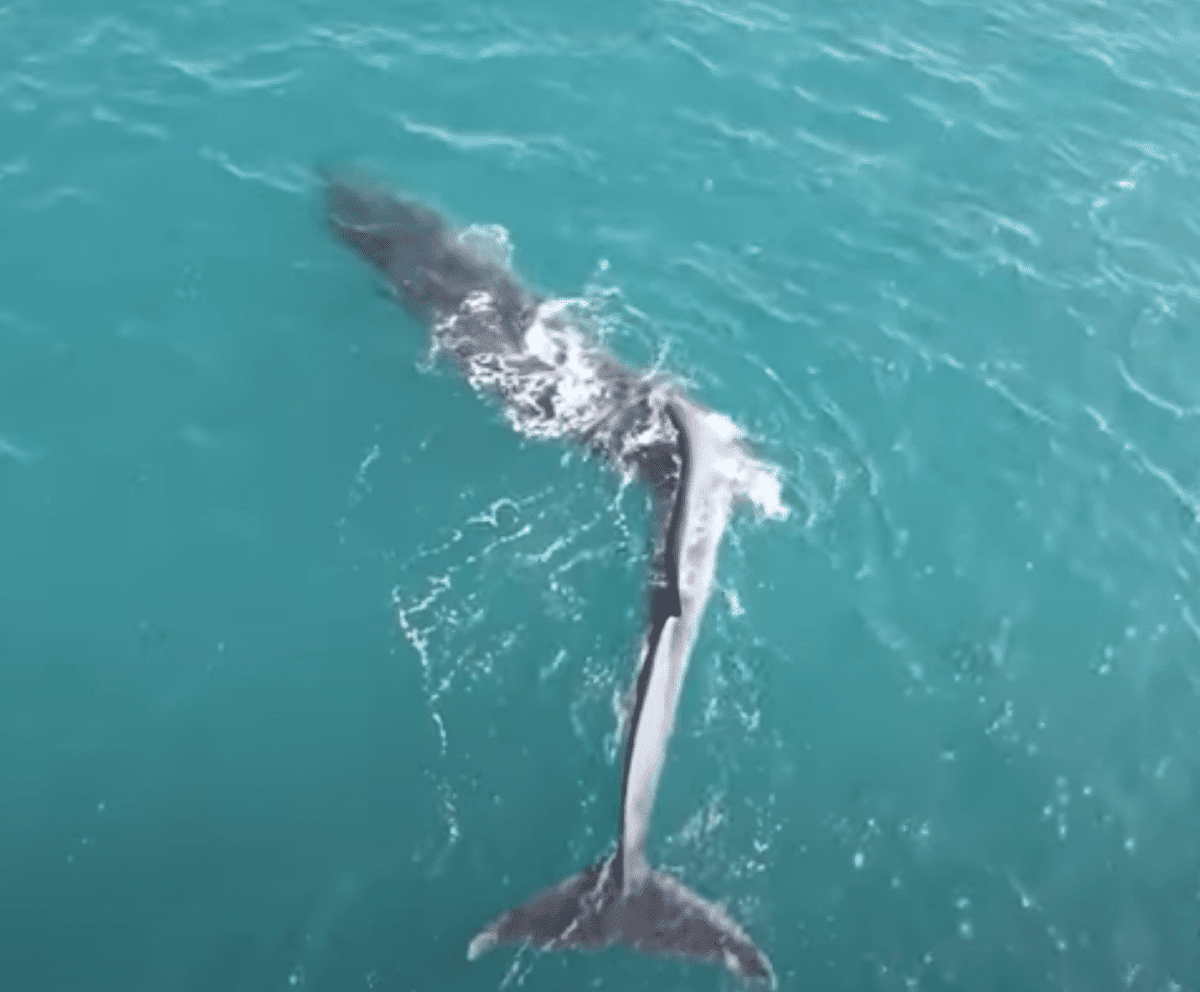In the vast expanses of the ocean, a breathtaking encounter unfolded as a drone camera captured a colossal fin whale off the coast of Cullera in Valencia, Spain. This remarkable footage, dated March 14, 2023, unveils a marine giant battling not against the expected fishing net but a rare case of severe scoliosis, a deviation that defies the norm in the whale kingdom.
A Scoliosis Saga Unfolds
The saga begins on March 4, when the captain of a local boat raised the alarm, suspecting that a 55-foot-long, 40-ton fin whale was entangled in a net. Concerned for the whale’s well-being, an emergency response ensued. However, what the rescuers encountered was beyond the ordinary.
The Oceanografic Foundation in Valencia, comprising veterinarians and biologists, embarked on a mission to evaluate the situation. Contrary to initial assumptions, the whale was not ensnared in a net; rather, it grappled with an extraordinary condition – severe scoliosis. The creature’s spine exhibited a profound deviation of unknown origin, fundamentally altering its anatomy and impeding its ability to navigate the waters with ease.
A Unique Affliction
In a candid revelation via a Facebook post, the Oceanografic Foundation disclosed the unprecedented nature of the whale’s condition. This massive marine mammal was not a victim of entanglement but a rare and severe deviation in its spine. The scoliosis, unlike any documented case, left the whale contorted and struggling to swim properly, unveiling a captivating chapter in marine biology.
Unlike humans, whales typically do not develop scoliosis spontaneously. A 2021 Nature study highlighted that reported cases often stem from traumatic injuries, such as collisions with ships. This exceptional instance, however, added a mysterious layer to the narrative, as the origin of the whale’s scoliosis remained elusive.
A Failed Attempt at Tracking
With the intention of monitoring and understanding the whale’s movements, the Oceanografic Foundation expressed a desire to fit a tracking device onto the massive mammal. However, logistical challenges emerged, preventing the team from executing this plan. The sheer size of the 40-ton whale, coupled with its location and unique deformation, thwarted the attempt to equip it with a tracking device.
Despite the failed attempt, the whale, after a brief examination, returned to the open sea. However, the foundation remains vigilant, anticipating a potential reappearance in the same area due to the whale’s evident difficulty in swimming.

The Plight of Fin Whales
Fin whales, the second-largest species on the planet, find themselves in the precarious position of being listed as endangered under the Endangered Species Act and depleted under the Marine Mammal Protection Act. The primary threat to these majestic creatures comes from vessel strikes, underscoring the urgent need for conservation efforts. These incidents underscore the vulnerability of these marine giants and emphasize the pressing need for heightened awareness and protective measures.
Up next:
Top 5 Places to See Fin Whales
Watch a Whale Gently Pushes Paddleboarder With Fin
Join our Forum for free today!

- The Kleptomaniac Cat That Rules Houston - July 20, 2024
- Elephant Makes a Lifelong Friend at Sanctuary in Tennessee - July 14, 2024
- Evidence For World’s Oldest Fossilized Forest Discovered in New York - July 11, 2024

